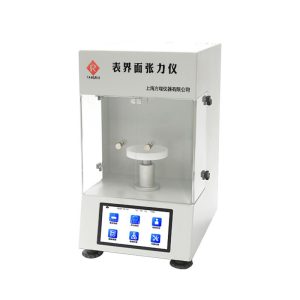Difference between surface tension and contact Angle
surface tension and contact angle are both quantities that describe the properties of a liquid on a solid surface, but there are some differences between them.

Surface tension refers to the interaction between molecules on the surface of a liquid. These forces enable molecules on the surface to form a tightly bonded layer on the surface, making the liquid surface form a relatively stable interface. The amount of surface tension determines whether the liquid surface can form a concave shape and whether the droplets can maintain their shape on the surface without merging or splitting. Surface tension is usually measured in Newtons per meter (N/m).
Contact Angle is the Angle between the contact line between liquid and solid and the solid surface. It can be used to describe the wetness of liquid on the solid surface. The smaller the contact Angle, the better the wetting of the liquid on the solid surface, and the droplet can expand on the surface. When the contact Angle is greater than 90 degrees, the liquid cannot expand on the solid surface, forming a droplet shape. Therefore, the contact Angle can be used to evaluate the hydrophilicity or hydrophobicity of the coating surface. Contact Angle is measured in degrees (°).
In addition, surface tension and contact Angle are applied and measured differently.
Surface tension can be used in the formation and stabilization of droplets and foams, wettability of liquids and separation techniques. The contact Angle can be used to evaluate the hydrophilicity or hydrophobicity of the material surface, the wettability of coatings and inks, as well as surface cleaning and surface modification.
Difference between surface tension and contact Angle
Surface tension can be measured by suspension drop method, balance method, reflux method and other methods, while contact Angle can be measured by automatic contact Angle instrument or manual measuring instrument. In practical application, these measurement methods need to be selected according to the needs of specific application field.
In short, surface tension and contact Angle are both physical quantities that describe the properties of a liquid on a solid surface, but surface tension describes the interaction between molecules on a liquid surface, while contact Angle describes the Angle between the contact line between a liquid and a solid and the solid surface. Their properties and applications are different, but they are widely used and studied in industry and science.
